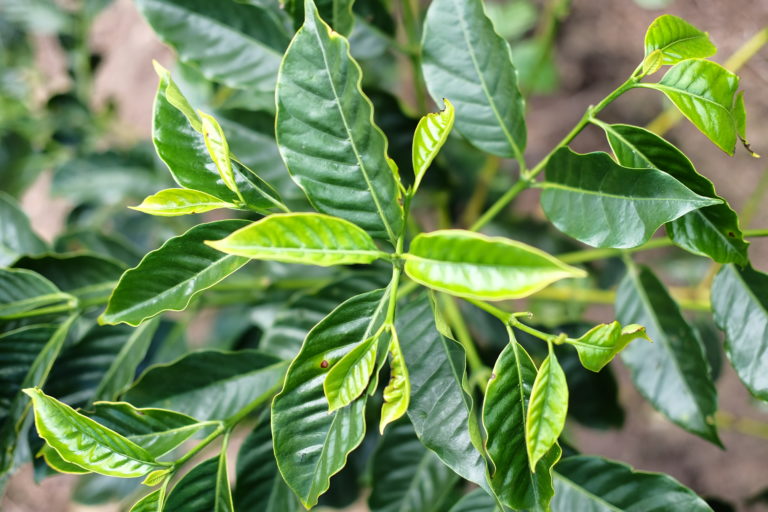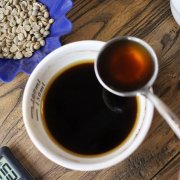Where can I buy raw coffee beans? how to preserve them? how to stir-fry them?

Professional coffee knowledge exchange More coffee bean information Please pay attention to coffee workshop (Weixin Official Accounts cafe_style)
There are two main processing methods of green coffee beans: wet processing and dry processing. Wet processing begins with removing the pulp of the coffee fruit, followed by fermentation to remove the mucous membrane remaining on the endocarp, washing with water and drying. Coffee is spread out in the sun and exposed to the sun. In order to avoid uneven drying or fermentation, it must be stirred at the right time, and the number of days in the sun depends on the maturity of the fruit. High ripeness takes only a few days, immature fruit takes 1 - 2 weeks.
Wet processing of coffee beans less defective, but the fermentation process of coffee beans easily contaminated with fermentation odor, so that coffee beans have fermented flavor. Studies have shown that wet-processed Arabica tastes fresher and more aromatic, with floral, bouquet, fermentation and grassy notes.
Dry-processed coffee beans are of poor quality. Since dry processed coffee beans are often mixed with green coffee beans, roasting produces a disgusting odor and rancid smell. Dry-processed coffee beans are easy to mix too many impurities such as defective beans and affect coffee flavor.
Dry-processed Arabica coffee beans taste reminiscent of mineral oil and carbon, research shows. Dry processing increases the astringency and bitterness of coffee due to microbial action, as well as undesirable buttery and grassy flavors.
In addition, the storage of green coffee beans also has a certain impact on flavor. Although green coffee beans are easier to store than roasted coffee, they should not be stored for too long. This is because the oil of coffee beans is easy to oxidize during storage, which will reduce the quality of coffee products.
Although there are only three ways to process coffee, if you don't know the ins and outs of coffee from green beans to roasting completion, you must remember it hard, it is indeed a bit difficult (?!)...
Therefore, we explain in detail the five processes of a coffee from the branch to the table. Dear owners/managers, share this article with your employees who do not have a long heart! This time, they should be able to remember!
01
Green bean picking
It is divided into mechanical picking and manual picking.
Mechanical picking is suitable for coffee plantations with flat land and large areas. Brazil is the most popular country in the world to use mechanical picking coffee. This method is characterized by low cost and high efficiency, but the coffee beans picked are uneven and of poor quality.
For coffee beans with higher quality requirements, the method of manual picking is generally adopted, which ensures that the coffee fruit after picking is uniform in size, close in maturity and free of other impurities, and is also conducive to the later processing of coffee beans.
02
From fruit to coffee beans
Dry processing (solarization):
The coffee fruit is dried and dehydrated under natural conditions such as sunlight and ventilation, and then the dried coffee fruit is put into shelling to remove pulp, peel and silver skin. This method is the most economical and traditional processing method, and the coffee beans treated in this method can maintain the aroma for a long time, but at the same time will have a certain environmental smell.
At present, many parts of Africa and Asian countries use this method, but with the advancement of science and technology, many places have begun to use dryers to dry coffee fruits.
Wet processing (water washing):
Also known as washing method processing, the coffee fruit is screened by soaking method, and then the fruit after screening is fermented and squeezed to remove the peel, pulp and silver skin sticky pulp on the surface. The processed coffee beans will retain the silver skin on the surface for storage. The coffee beans in this state are called "Parchment Coffee"(Parchment Coffee), and the dried silver skin will be removed by peeling machine until they are exported.
The biggest advantage of wet processing is that the coffee beans have excellent appearance quality and maintain good original flavor.
The disadvantage is that the processing cost is high and a lot of water is required. Generally used for the processing of high-quality coffee beans.
Honey treatment:
Honey processing, called the Honey Process or Miel Process, is a method of drying the fruit with the endocarp after peeling the pulp.
03
Transport
At this point, the processed coffee beans will be sent to the baking plant.
04
Before you start baking,
Pick raw beans-the selection of raw beans is also very important, defective beans will affect the flavor of coffee products.
Be careful! It is necessary to pick out all black beans / local black beans, sour beans / local sour beans, mold-damaged beans, worm-eaten beans, immature beans, withered beans, shell beans, shell beans, broken beans, and other foreign bodies (non-coffee impurities, including branches, stones, copper, etc.).
05
Coffee roasting
Coffee roasting is another science.
The age, density, hardness and moisture content of raw beans will affect the quality of roasted coffee; even the relative humidity and temperature on the day of roasting can not be ignored.
Baking is the direct heating of the baking, without the use of oil, water, salt or sugar.
END
Important Notice :
前街咖啡 FrontStreet Coffee has moved to new addredd:
FrontStreet Coffee Address: 315,Donghua East Road,GuangZhou
Tel:020 38364473
- Prev

Guide to the selection and purchase of coffee machine at home-which kind of coffee machine is good to use at home? how to choose coffee machine
Professional coffee knowledge exchange more coffee bean information please follow the coffee workshop (Wechat official account cafe_style) when you want to buy a coffee machine, remember that the price reflects the quality of the goods for every penny. In addition to the appearance of the machine shell you see, there is also the principle of grinding beans and cooking inside the machine, the manufacturing material of important parts, and the quality of overall use. What you really need is more than a coffee.
- Next

Where to buy coffee beans _ where to sell coffee beans _ how to buy coffee beans
Professional coffee knowledge exchange more coffee bean information please follow the coffee workshop (Wechat official account cafe_style) how to make coffee? In fact, like catering in this respect, the taste of a cup of coffee largely depends on the raw materials, that is, the quality of coffee beans. Whether a cup of coffee tastes good or not, coffee beans may account for 80% of the decisive factor. Affect the quality of coffee beans
Related
- Beginners will see the "Coffee pull flower" guide!
- What is the difference between ice blog purified milk and ordinary milk coffee?
- Why is the Philippines the largest producer of crops in Liberia?
- For coffee extraction, should the fine powder be retained?
- How does extracted espresso fill pressed powder? How much strength does it take to press the powder?
- How to make jasmine cold extract coffee? Is the jasmine + latte good?
- Will this little toy really make the coffee taste better? How does Lily Drip affect coffee extraction?
- Will the action of slapping the filter cup also affect coffee extraction?
- What's the difference between powder-to-water ratio and powder-to-liquid ratio?
- What is the Ethiopian local species? What does it have to do with Heirloom native species?

